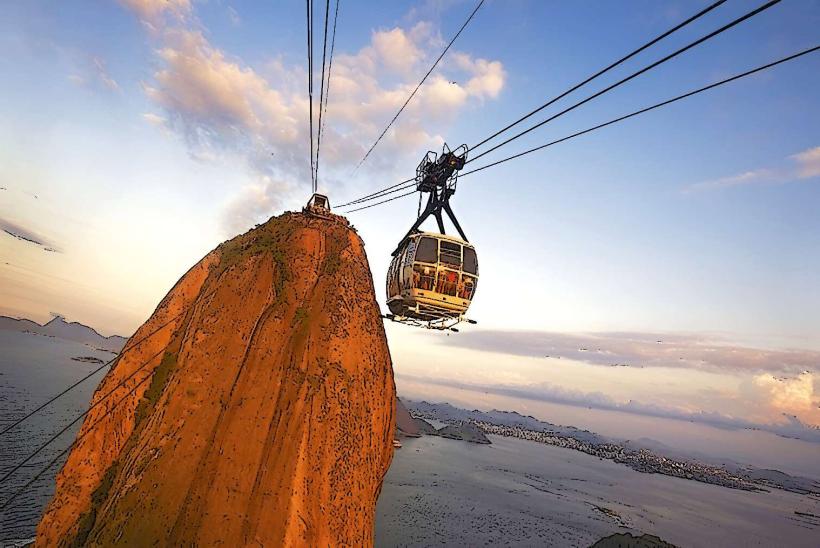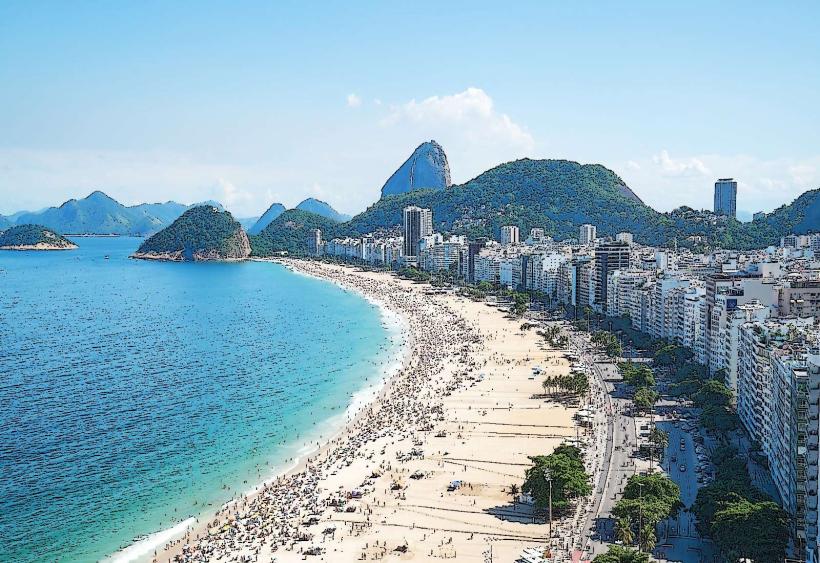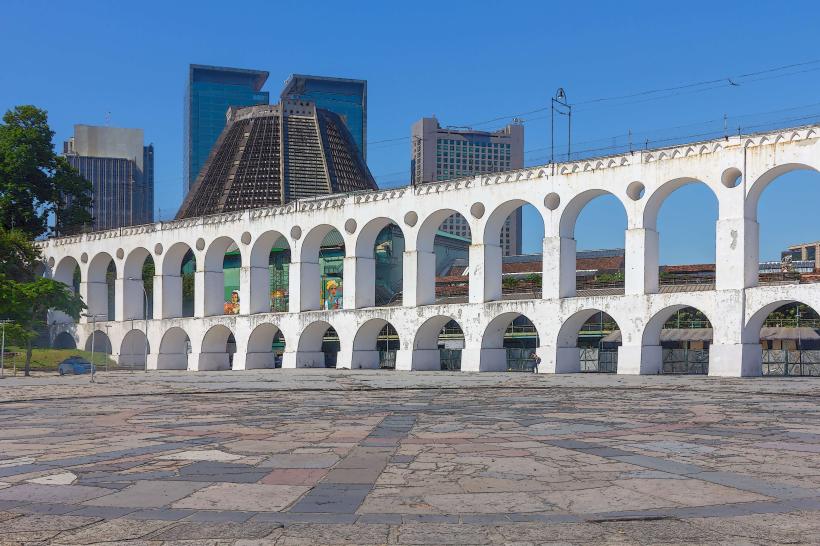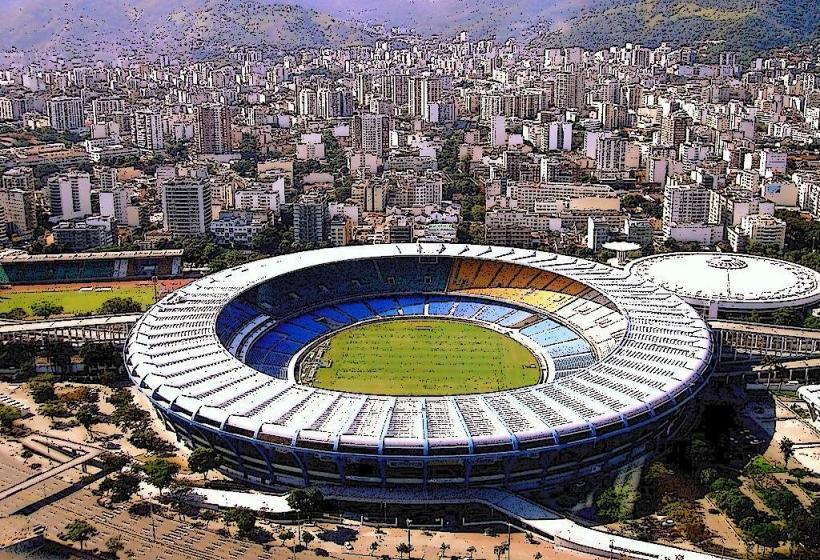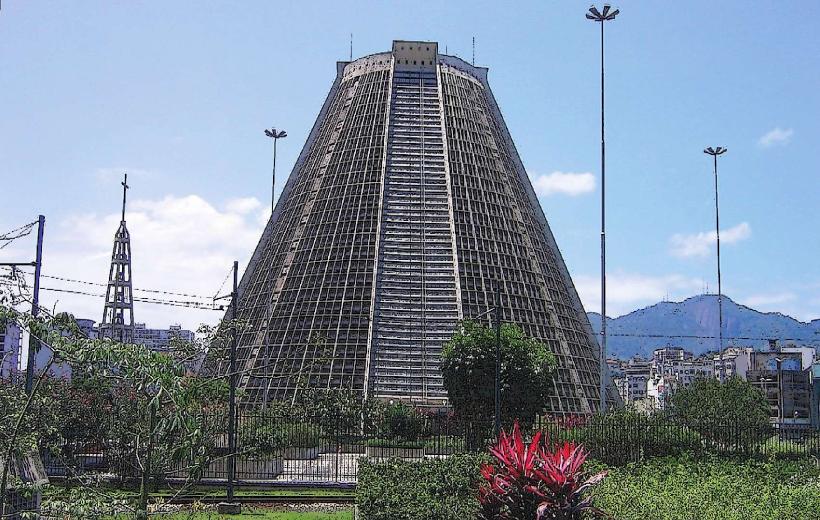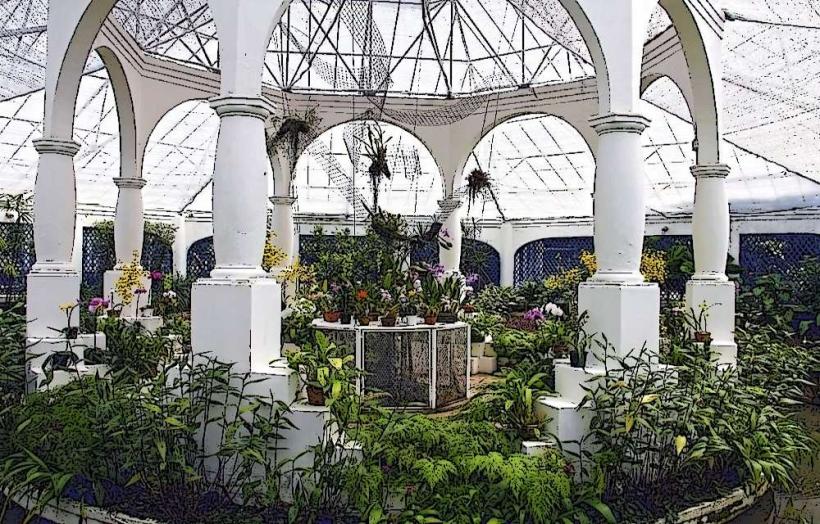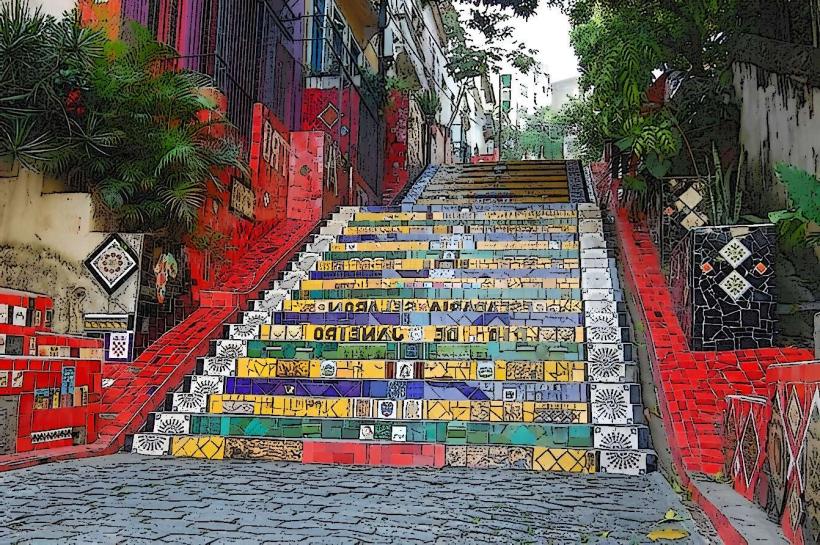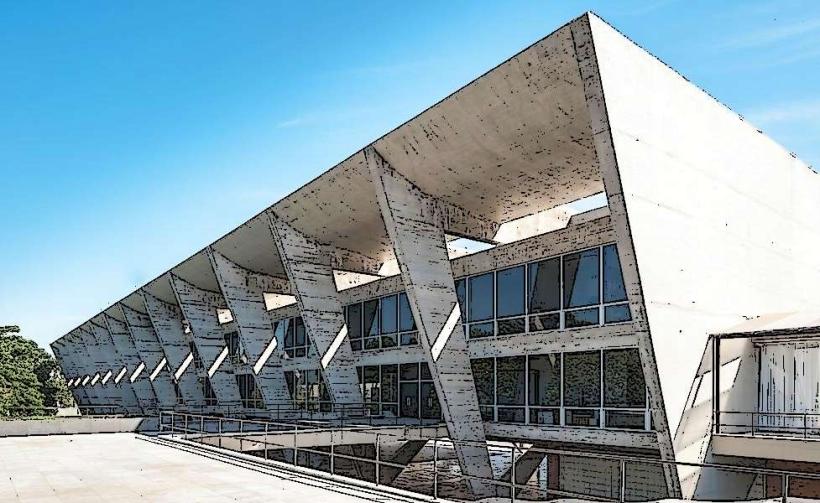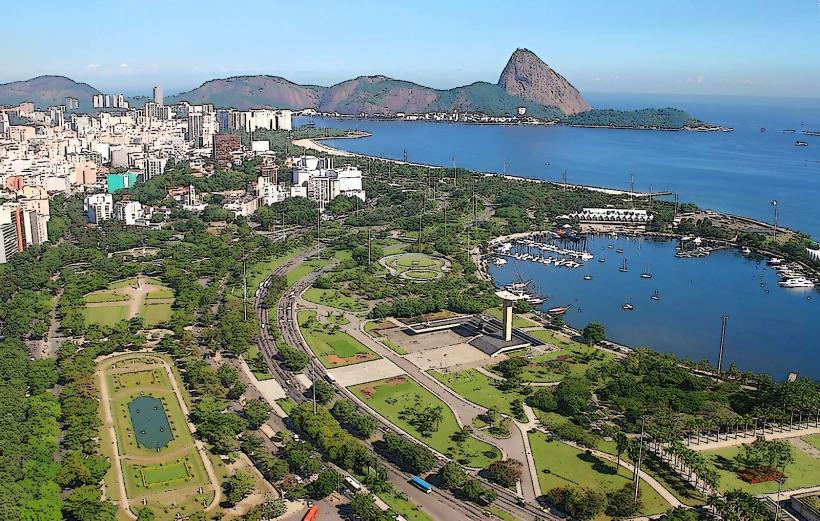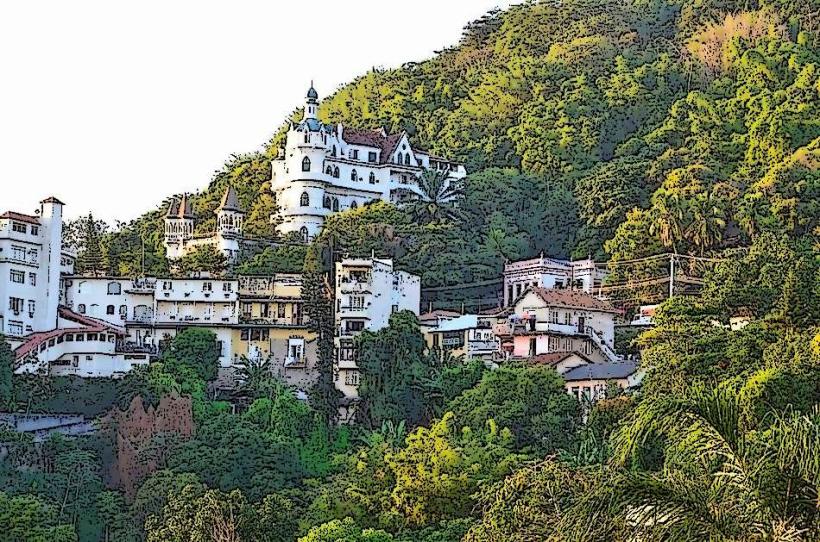Information
Landmark: Museum of TomorrowCity: Rio de Janeiro
Country: Brazil
Continent: South America
Museum of Tomorrow, Rio de Janeiro, Brazil, South America
Overview
In Rio de Janeiro, the Museum of Tomorrow (Museu do Amanhã) showcases bold, forward-thinking science beneath its sweeping white curves.Since opening in 2015, the museum has earned a reputation for its bold, light-filled design and its deep dive into sustainability, futurism, and the tough questions humanity will face in the decades ahead.It’s one of Brazil’s most striking and forward-thinking cultural hubs, blending education, science, technology, and art to draw visitors into big questions about the future-like standing before a glowing digital map that charts a warming planet.Number one.Design and Architecture - The Museum of Tomorrow, a striking creation by Spanish architect Santiago Calatrava, blends bold curves and sweeping white lines that capture his signature futuristic, organic style.The building is a work of art, its sweeping, wing-like roof stretching out over the blue waters of Guanabara Bay and catching the light in a way that stops you in your tracks.The museum sits in Porto Maravilha, a waterfront district in Rio de Janeiro that's part of the city's sweeping downtown revitalization.Perched at the bay’s edge by Olympic Boulevard, it rises into view, a clear landmark against Rio’s skyline, catching the light off the water.Sustainability in Design: The museum’s built to last, with features like skylights that flood the halls with natural light.It’s built with solar panels, a rainwater collection system, and natural ventilation that lets in a soft cross-breeze, all working together to shrink its environmental footprint.With its sweeping, organic curves, the building echoes shapes found in nature, underscoring the museum’s theme of blending technology with the natural world.Number two.Looking ahead, the Museum of Tomorrow explores what the future might hold, showing how humanity can craft a sustainable world-one where the air is clean and the next generations can thrive.It’s meant to spark reflection on global challenges-climate change, social inequality, environmental decline, and rapid leaps in technology, like AI tools appearing in everyday life.The museum explores the future through an interdisciplinary lens, weaving science, technology, art, and social issues into an experience that’s as thought-provoking as spotting a robot sketching in a gallery corner.It urges visitors to think about how their choices today-like the energy they use or the food on their plate-help shape the planet’s and humanity’s future.Innovative Exhibits: Instead of rows of dusty artifacts behind glass, the Museum of Tomorrow invites you to step into interactive displays, lose yourself in immersive experiences, and explore installations that make you stop and think.It draws visitors into picturing the world of tomorrow, then pushes them to question where humanity’s headed, like tracing a winding road disappearing into the haze.Three.The museum’s permanent exhibitions are split into themed sections that look toward the future and our role in shaping it; in The Cosmos, you’ll journey from the first spark of the universe to humanity’s small but vivid place among the stars.Visitors can explore how the universe has changed over time and discover our place in it, from the first burst of starlight to the world we know today.It opens the door to the idea that our future is tied to the vast, star-filled expanse of the cosmos.Earth: This section zeroes in on the environmental side of our future, tackling climate change, protecting biodiversity, and ensuring our planet’s resources-like clean water-last for generations.It urges visitors to think about how our choices are shaping the planet-melting ice, rising seas-and to decide what steps we can take to protect it.Anthropocene: This exhibit explores how humans have reshaped the planet-from carving highways through forests to altering the climate-and challenges us to rethink our choices to protect its future.It explores urbanization, industrial growth, and the human side of environmental challenges, from crowded city streets to shifting community lives.Tomorrow, the museum’s final section focuses on solutions and fresh visions for a sustainable future, like cities powered entirely by quiet, glinting solar panels.It highlights cutting-edge advances in technology, design, and science, all focused on tackling the planet’s toughest problems-like clean water for drought-stricken towns.This exhibit paints a brighter picture of the future, showing that with the right steps-like planting new trees or cleaning up rivers-real change can happen.Number four.The Museum of Tomorrow also puts on temporary exhibitions, spotlighting fresh ideas in science, art, sustainability, and technology-like a vivid display of solar-powered sculptures.The museum swaps out its exhibitions year-round, each one offering a new angle or insight-like a quiet photograph that suddenly makes you see the familiar in a different light.The museum offers hands-on workshops and engaging programs for everyone, from curious kids to adults, where you might even paint your own clay tile.These programs draw people into the museum’s themes, inviting them to roll up their sleeves for hands-on projects and join lively conversations about the issues shaping our future.Number five sits squarely in the list, like a small mark on a page you can’t overlook.One of the museum’s standout features is how it uses technology to pull visitors in-touchscreens that light up under your fingertips, games that respond as you play.Guests can dive into exhibits through interactive screens, step into virtual worlds, layer on augmented reality, and wander through immersive installations where they might, for example, turn a glowing dial to trigger a hidden scene.Sustainability Simulation: The museum offers an immersive multimedia exhibit where visitors can step into vivid future worlds-like a flooded coastal town or a thriving green city-to explore possible outcomes of climate change and environmental choices.In these simulations, visitors see for themselves how human actions shape the environment-like smog clouding a city skyline-and discover possible ways to fix it.The museum turns learning into a game, drawing visitors into challenges that make tough topics-like social inequality or a warming planet-feel clear and real.Many exhibits feature hands-on games that let visitors try out different choices-like building a city or saving a forest-and watch how those decisions shape the future.Number six.Cultural and Social Impact, Global Dialogue: The Museum of Tomorrow isn’t just a neighborhood landmark-it sparks conversations across continents about the urgent challenges humanity faces, from rising seas to shifting cultural identities.The museum tackles universal issues-climate change, technology, sustainability-to bring people together from every corner of the globe and spark action, like planting a single tree in a bare patch of earth.Public Engagement: The museum sparks conversations about sustainability and global challenges through its exhibitions and programs, from vivid photo displays of coral reefs to hands-on workshops for visitors.It urges visitors to think about how what they do now-like planting a single tree-can shape tomorrow, and it inspires them to make a difference for the better.The museum partners with organizations, universities, and institutions near and far, working side by side to keep its learning spaces lively and always changing-like a gallery wall that never looks the same twice.It’s worked with scientists, tech innovators, environmental advocates, and artists, bringing together voices as different as a lab bench and a painter’s studio to share visions of the future.Seven.Visitor Experience - Location and Accessibility: You’ll find the Museum of Tomorrow in Praça Mauá, a lively, restored stretch of Rio’s Porto Maravilha waterfront, just a short walk from favorites like the Rio Museum of Art (MAR) and the Museum of Image and Sound (MIS).The area also offers other draws, like the lively Santos Dumont Square with its shaded benches, making


